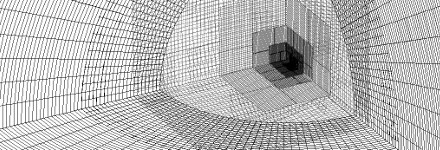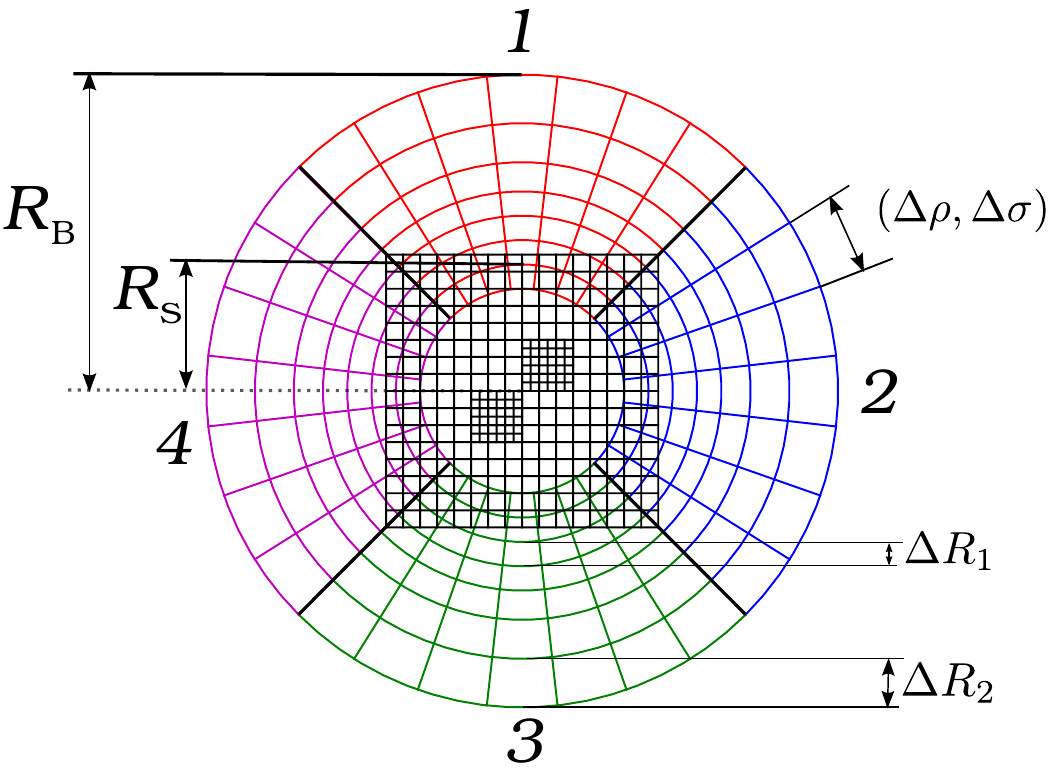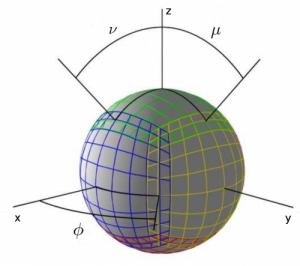

A z=0 slice through the simulation domain: a central Cartesian patch with AMR is surrounded by 6 “inflated cube” grid patches.

A radial shell of the spherical inflated cube patch system. On interpatch boundaries, one coordinate direction always coincides, reducing ghost-zone interpolation two 1d.
I and collaborators have successfully implemented and tested a multiblock scheme with flux-conservative adaptive mesh refinement (AMR). Multiblocks allow one to cover the simulation domain with multiple curvi-linear grid patches. This enables a greater flexibility in adapting the grid resolution to the problem symmetry. For instance, the gravitational-wave zone or the outer layers of a star exhibit approximately spherical symmetry. Hence, the most natural way of covering the simulation domain is given by a spherical coordinate system. The interior of a star, or more generally, the gravitating source may not exhibit any symmetry and is therefore best modeled with Cartesian grids. A suitable multiblock system is given by our 7-patch inflated cube system. The spherical region is covered by 6 overlapping “inflated cube” grid patches. The strong field region is covered by a central Cartesian patch with flux-conservative Berger-Oliger AMR with sub-cycling in time. The multiblock code enables studies of stellar collapse and binary neutron star mergers with unprecedented accuracy and represents state-of-the art numerical relativity technology. It can be downloaded here. The corresponding publication is available here.
